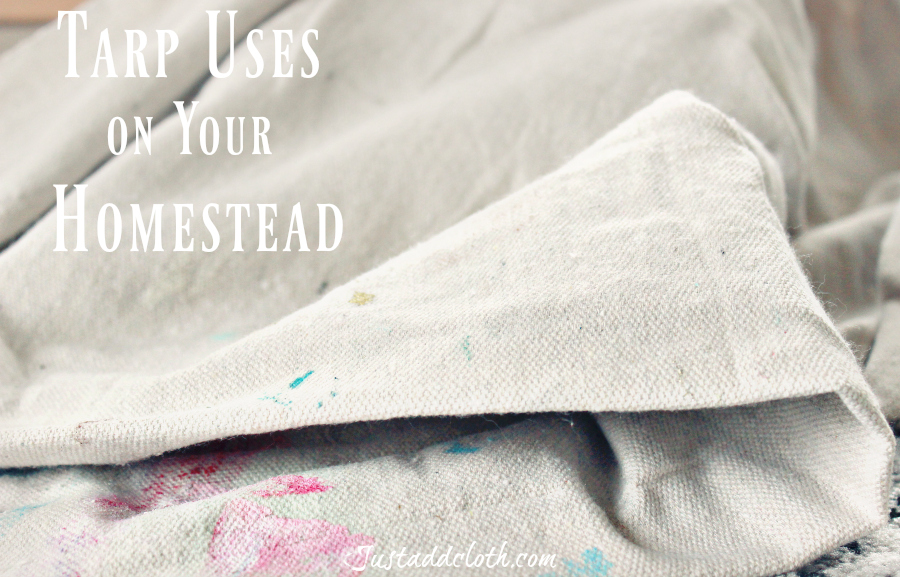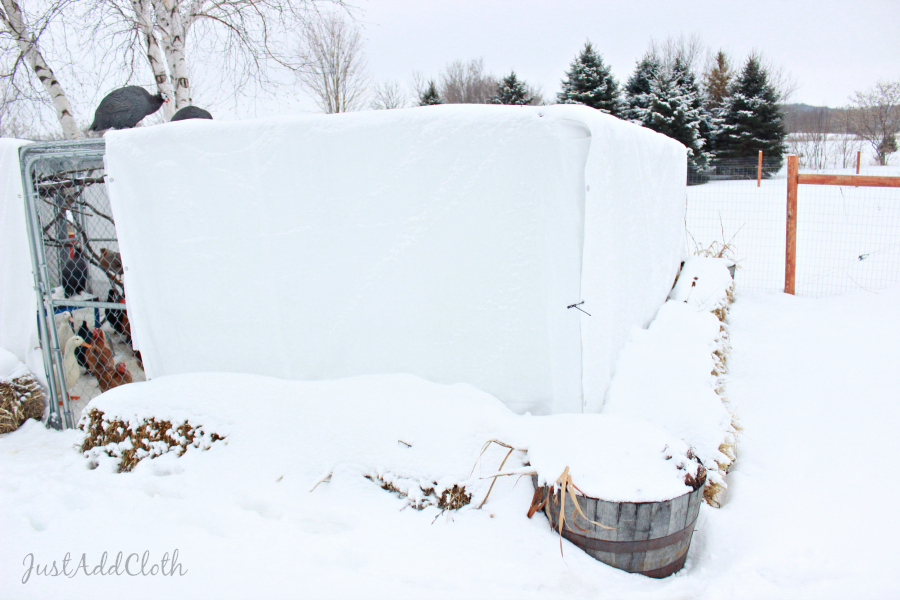
There are many things you want to invest in once you get your homestead going. Power tools, fencing, endless buckets. Oh the buckets. I could go on for an hour just about buckets.
One thing people may overlook is the ever humble tarp. Canvas tarps, plastic tarps, heavy weave poly tarps…..they all have so many useful purposes.
Tarps are something you will eventually need frequently, but had no idea just how much until the time comes.
With our little farmstead up and running, I’ve embraced my inner tarp queen status and have come to appreciate these big ugly sheets of awkwardness.
Four Unique Uses for Tarps on Your Homestead
Get tarping!
Weed control
Pick your planting spot. Now tarp it and kill everything on the ground so you can actually plant. Weeds and invasive plants can crowd out the items you are actually trying to grow. You can of course spend 12 hours a day weeding and use herbicides if you like,. however, we prefer to just suppress some of the weeds to begin with as well as keep things organic. We uses cardboard between our corn rows for controlling overgrowth of weeds, but for a big garden, we need a bigger coverage. Staking down heavy tarps in early spring to suppress growth until planting will make the garden more manageable later in the season.
We also utilize this method for prairie restoration. We always need to suppress some of the invasive species for a bit before planting our native prairie grasses.
Winterizing Animal Lodging
Often times animal lodging is cold and drafty in the subzero months. Now, obviously you don’t want to create an air-tight building since there needs to be a lot of ventilation for humidity and air quality, but blocking drafts from a couple sides is important for the comfort of your animals and preventing frostbite. We used about 12 large white tarps to wrap our protected chicken run for winter. We have too much wind for plastic sheeting, so heavy weave tarps are the way to go. You can even use them to line a side of a drafty barn for wind protection.

Hauling Debris
When our trees drop 200 tonnes of leaves in Fall and we need to haul them to another part of the property, a huge tarp for dragging all those leaves is much quicker than bagging and dumping. (Dried leaves make good chicken litter in the coops.) Let’s be real, bagging 10 acres of leave would be ridiculous. Draging manure and compost across the property works as well, but it can get pretty heavy, so you would need to invest in a heavy duty tarp to prevent ripping.
Wind Breaks
The wind from the west is intense in winters here. It can get up to 110 mph during storms and send our grill, propane tanks, patio furniture, and storage trunks flying across fields or crashing into the house. Wrapping the underside of our deck in a tarp on just one side to create enough of a wind break to store those types of things for the winter months is helpful. That way we don’t have to go hunting for our belongings in the snow. However, I highly recommend you use a loose weave tarp or even cut a few slits in your windbreak tarp. You don’t want your windbreak so sealed that it creates a sail effect and threatens to take down the structure and everything else with it.
There are about a hundred more uses for tarps of course, but these four tend to make up the bulk of our needs on our little farmstead. So if you are stocking up on buckets and tools for your new homesteading adventure, make sure to toss a few heavy duty tarps into your shopping cart.
Don’t forget to have a place to store all these tarps. Apparently even folded, a 200 ft by 200 ft poly tarp takes up some space. Who knew? Haha.

